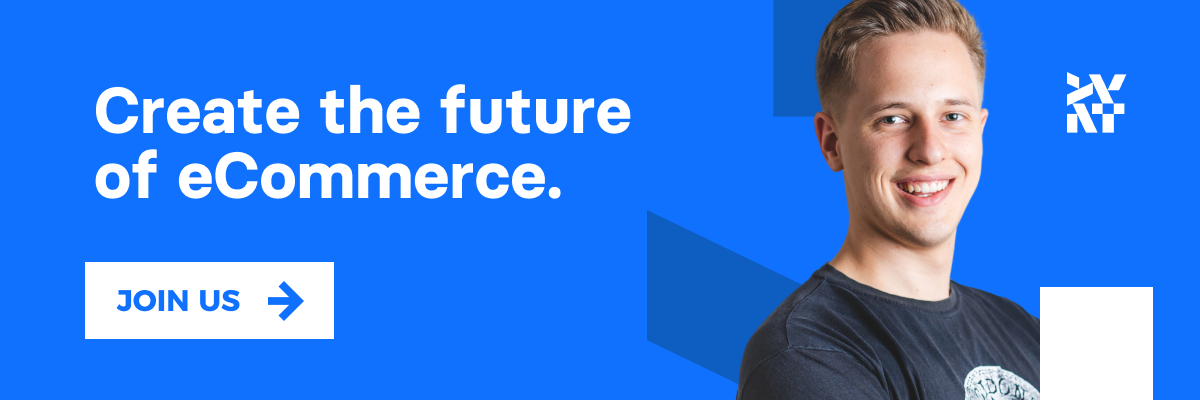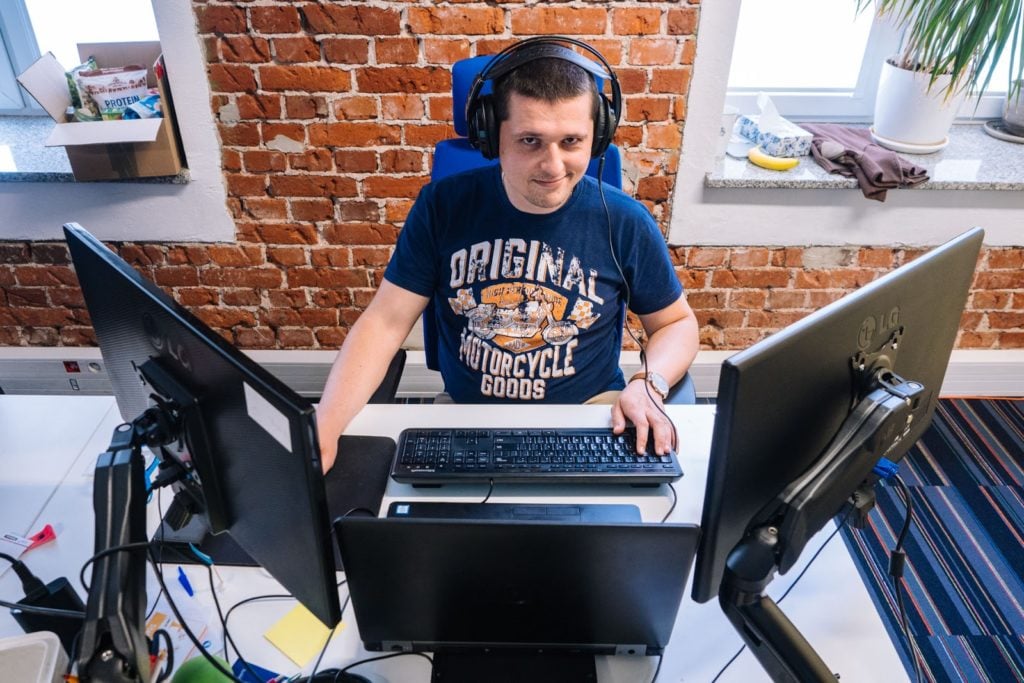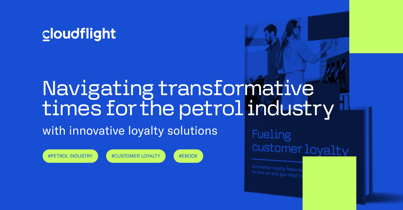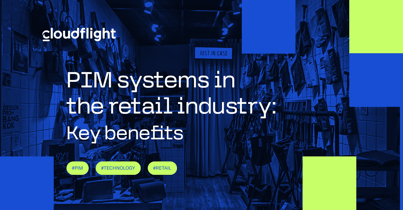Small teams, a great atmosphere, and drive. The tribes model in Divante is all about the people.
Check out available job offers in Divante ➝
The tribes model has helped Divante to grow and build an agile, modern organization without losing the company’s DNA. I asked Divante employees how it works for them – what are the benefits of the agile tribe model from their perspective?
Small company culture with the advantages of a large organization
The agile tribes model combines all the benefits of working in a small company, like a start-up, with the advantages of working in a large company.
— You are part of a small, close team in which decisions are made quickly. There is no bureaucracy, people listen to ideas. You have a path of development, and all the benefits of a large company. You can grow, but if you fall down, we’ll catch you. It’s development with less risk – said Tomasz Karwatka, CEO at Divante.

Growth, Drive & Knowledge Exchange
Tribes support what Divante calls “Drive”. If you have an idea, it’s much easier to put it into practice in a small organization; you can discuss it with the Tribe Master who is sitting close to you. Then, if everything goes well, you can implement it, or work on this idea slowly, gradually and over time, create something big.
In Divante, some projects come from the employees, from the bottom up.
— There is a programmer who made a great system for booking conference rooms. The previous one annoyed him. It took one year for him to finish it. Now, at the door to each room, we have a tablet with a simple, clear and nice reservation program. Nobody ordered it, but the value is huge. And everyone likes it – says Tomasz Karwatka.
It’s a win-win situation. Employees see they can do something important, and interesting. If that works well they can continue to develop their ideas on a larger scale.
The company is also more open to their employees’ growth.
Let’s forget about the agile tribes model for a minute and move to the departments model. If you are a backend developer, you deal with backend development every day. Frontend development may also be interesting for you, though. Unfortunately, your boss doesn’t want you to learn frontend. He handles the backend. The frontend is not the area of his interest. That kind of approach may kill your creativity and desire to develop. Especially if you are particularly ambitious and want to learn different things.
— Such an employee, who is, for example, Senior Backend Developer and wants to learn frontend, must change departments. But as a Frontend Developer, he doesn’t have much experience, so he will start from a junior position. That means a much smaller salary. At that point, most of the discussion about changes finish — said Tomasz Karwatka.
Now, let’s come back to the tribes model.
— In Divante, if developers want to grow and learn new things, they can do just that. Those less experienced can cooperate with more experienced colleagues. They learn, grow and finally do something together without the need for great life and financial changes. This is a real human approach. That’s natural. We are all interested in many things. Hardly anyone wants to be a specialist in screwing one screw on the production line. This is not cool — said Tomasz Karwatka.
Patrycja Wieliczko, Project Manager in the Magento Tribe at Divante, told me that the agile tribe model helps to exchange knowledge and learn.
— The tribes model simplifies the flow of knowledge between teams operating on the same technology. People have the opportunity to learn – not only within one squad or team. We can learn from many different specialists within the entire tribe.
Local culture, friendly atmosphere in small groups
In a corporate, large organization, people don’t know each other. Employees move from one desk to another. From floor -1 to +2. From one group to a different one. It’s a corporate reality that I personally faced in several companies. Employees have a different perspective when working in tribes.
— I started working in Divante in 2013. At that time, we were sitting in a small group on the first floor. And then we started to grow fast. Three years later, I changed my desk and the people with whom I spent a lot of time. I had to do this again. I wasn’t happy about that — said Iwona Jóźwiak, PHP Developer at Divante.
Luckily, it was the last such change for Iwona. She has now been working in one place for a few years together with friends.
— The tribe has made our world smaller. It was like at the beginning, or even better. We’ve created our small company, kind of a family, our brand, our principles — said Jóźwiak.
Grzegorz Bandurowski, Divante the A-Team Tribe Master, says that the tribes model gives more joy from everyday work.
— You come to your desk and concentrate on work. Your perspective is your desk, your colleagues next to you and a 20-30-person tribe, not a 200-person organization. You enter a room where you know everyone, and everyone knows you. They are familiar with what you like, how your family is, what your passions and hobbies are. These are the aspects that give joy during everyday work. Local culture is being developed.
All my interlocutors agreed that the atmosphere at Divante has always been good. The recent surveys among employees show that now, with the tribes model, it is even better. That’s a benefit that is not common in many companies.
Projects change, but people stay
In a corporate structure, the team gets half a year to implement the new project. It takes one third of that time just for people to get to know each other and start some real work.
— We noticed that after the end of the project we lost all good practices and relationships between people. With every new project, we had to start everything from the beginning. This took time and resources — said Natalia Urbańska, HR Director.
The Agile tribes model helped to solve that serious problem.
Iwona Jóźwiak: — Projects change as before, but people stay in one tribe. This is a huge advantage. We know each other very well, are aware of our strengths and weaknesses, know what we can do and what we should change for the better. Within the tribe, it is much easier to create common rules and procedures. Each of us has an impact on how our workday looks.
The Tribes model is all about people
— I don’t know everyone in the company, because there are too many of us. Yet, I work within familiar people, I am part of a larger family. I am glad that my Tribe Master knows my potential. I’m not anonymous, I do not work with random people. We care for each other. We have created a team within the tribe (5 people) which backs each other up during holidays and sick leave. With all the benefits of a small company, I feel safe because Divante is a mature, large company — said Iwona Jóźwiak.
This agile model combines most of the benefits of working in a small start-up with the advantages of working in a large, stable organization. It gives greater autonomy, more freedom, motivates and makes work fun. Drop us a message if you want to find out for yourself.

Published July 2, 2019















